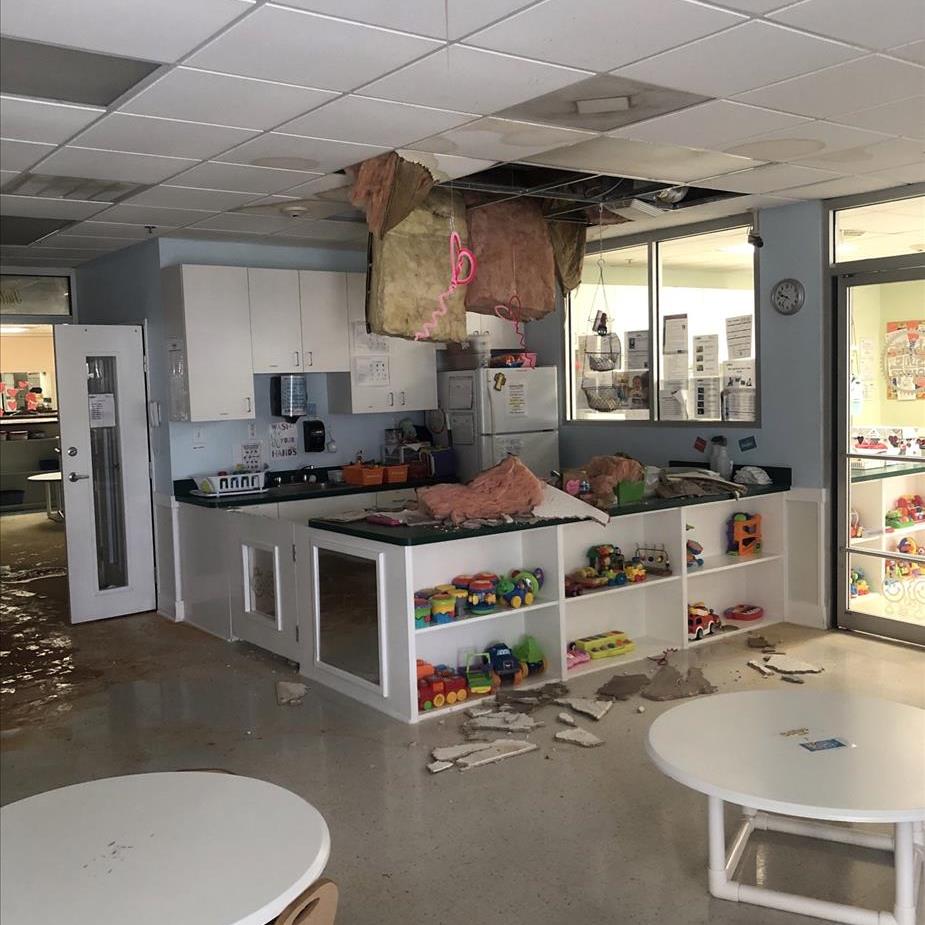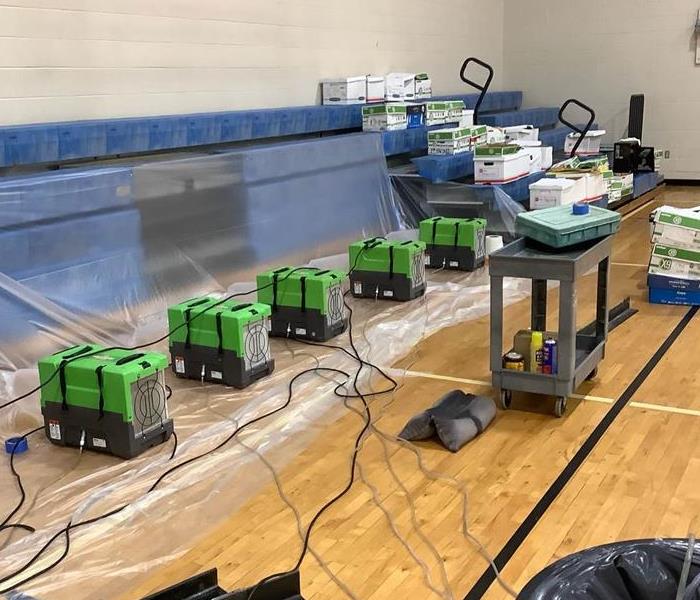Archived Blog Posts
Understanding the Three Categories of Water Damage: What You Need to Know
3/15/2023 (Permalink)
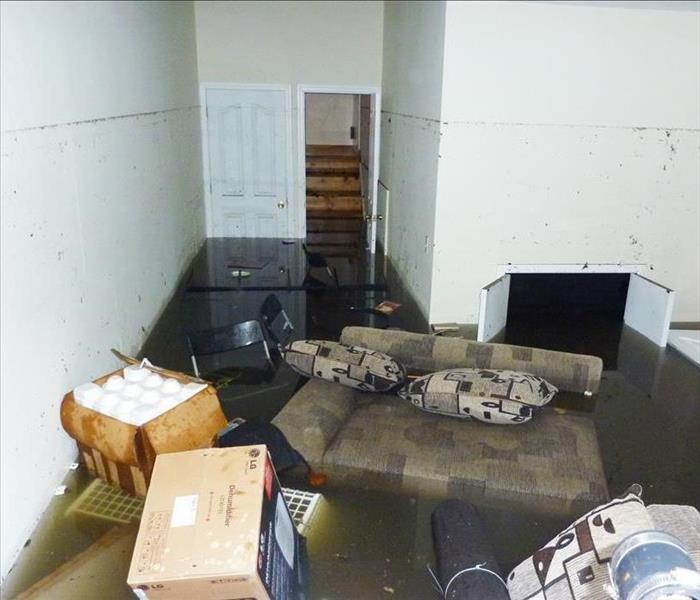 Water damage can be a serious problem for homeowners and business owners alike.
Water damage can be a serious problem for homeowners and business owners alike.
Water damage is a serious issue that can cause significant damage to your home or business. It can lead to structural damage, mold growth, and other hazards if not addressed quickly and effectively. Understanding the different categories of water damage can help you better understand the severity of the situation and take appropriate action.
There are three categories of water damage: Category 1, Category 2, and Category 3. Each category is defined by the level of contamination in the water.
Category 1 Water Damage
Category 1 water damage is also known as clean water damage. This type of damage occurs when the water comes from a clean source, such as a broken pipe or faucet. The water is generally safe to come into contact with and poses little risk of contamination. However, if left untreated, clean water can quickly become contaminated, leading to a higher category of water damage.
Examples of Category 1 water damage include:
- A burst pipe or water supply line
- A leaking or overflowing sink, bathtub, or toilet
- Rainwater or snowmelt that enters through a leak in the roof
Category 2 Water Damage
Category 2 water damage is also known as gray water damage. This type of damage occurs when the water is slightly contaminated and may contain bacteria or other harmful substances. Gray water can come from sources such as dishwashers, washing machines, or aquariums. It can also occur when clean water is left untreated for an extended period.
Examples of Category 2 water damage include:
- A washing machine overflow
- Dishwasher leakage
- Toilet overflow with urine but no feces
- Sump pump backup
Category 3 Water Damage
Category 3 water damage is also known as black water damage. This type of damage is the most severe and poses the greatest risks. Black water contains a high level of contamination, including bacteria, viruses, and other harmful substances. It can come from sources such as sewage backup, flooding from rivers or streams, and standing water that has been left untreated for an extended period.
Examples of Category 3 water damage include:
- Sewage backup
- Flooding from rivers or streams
- Standing water that has been left untreated for an extended period
It is important to note that Category 3 water damage can be extremely dangerous and should only be handled by trained professionals wearing appropriate personal protective equipment.
In conclusion, water damage can be a serious problem for homeowners and business owners alike. Understanding the three categories of water damage can help you assess the severity of the situation and take appropriate action to prevent further damage. If you have experienced water damage, it is important to act quickly and contact a professional restoration company to mitigate the damage and prevent mold growth and other hazards.
6 Frequently Asked Questions about Mold in Homes
2/24/2023 (Permalink)
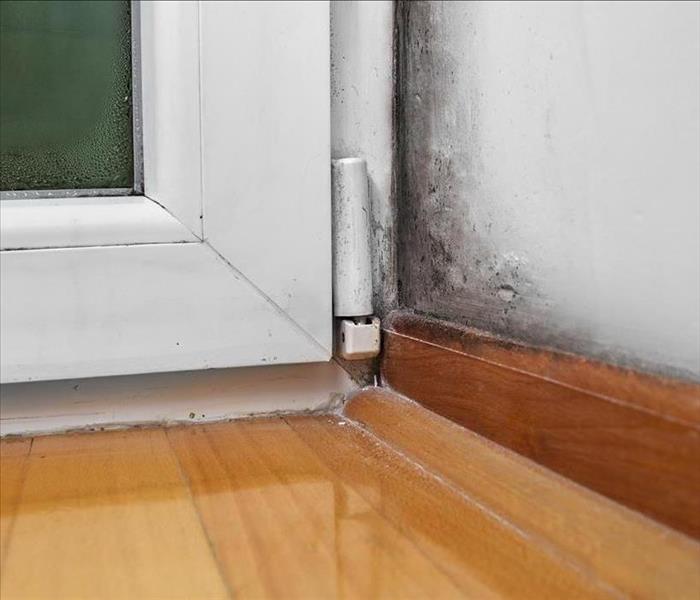 There are thousands of different kinds of mold.
There are thousands of different kinds of mold.
Mold. It's all around us, in the air and on surfaces. There's even mold in your home. Here are some of the most common questions about mold.
What is mold and where does it come from?
Mold is a fungus that grows on damp or decaying matter. There are thousands of different kinds of mold.
Mold spores are microscopic, so you can't see them with the naked eye. They exist everywhere, from homes and offices to forests and grassy fields. Although mold spores are present everywhere, it doesn't become a problem until it is introduced to moisture or high humidity levels.
Mold spores can be tracked into your home through open windows and doors, your HVAC unit, and even by your shoes, clothes, or pets.
How do I know if I have mold?
If you have a damp and humid area of your home, it's possible that mold is growing on the wood or drywall. Mold can appear in any room of the house, and it's common to see it after a water leak or flooding. Bathrooms are prime locations for mold to grow as they are usually dark and humid.
If you see mold in your home, it's important to remove it right away. The longer it remains, the harder it will be to get rid of.
Will my insurance company cover the cost?
The answer to this question depends on your insurance company. Different insurers have different policies and may not cover mold removal. For instance, some insurance companies will only cover mold remediation if the infestation occurs due to a water leak or flooding; others require a preliminary inspection prior to making any decisions about coverage. You should contact your agent or broker before taking action so that they can help you understand their policy options.
Can I clean up mold myself?
If you are unsure about whether or not the mold in your home can be cleaned up, it's best to leave the job to a professional. If you do decide to try and clean up the mold yourself, make sure that you wear protective gear such as gloves and a mask when doing so.
If it is only a small patch of mold in one area of your home--for example, if there is some visible mold in the corner of your shower--you should be able to remove it using special cleaning products such as OxyClean. However, if there is extensive water damage that has led to large patches of mold infestations growing, then this type of remediation should always be left up to professionals.
How can I prevent mold?
To keep your home free of mold, you should make sure that humidity levels stay below 50%. It is also important to keep your home dry by cleaning up any water damage as quickly as possible.
Who can I call if I suspect there is mold in my home?
If you suspect there is mold in your home, it's important to call a professional. A professional can locate and remediate the mold properly and efficiently. Companies such as SERVPRO of Downtown Houston Central South is highly trained and experienced in residential and commercial mold remediation and cleanup. If you have any questions or are in need of water and mold cleanup services, don't hesitate and give our SERVPRO team a call today!
Top 5 Causes of House Fires
1/23/2023 (Permalink)
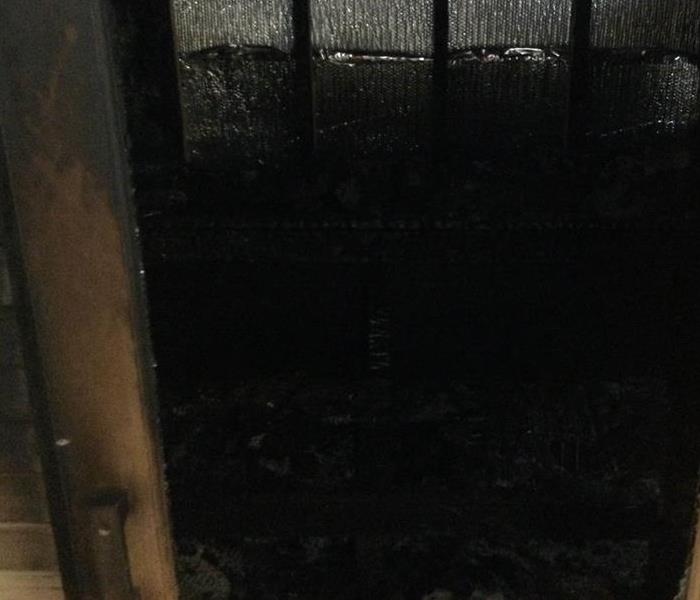 A fire damaged doorway.
A fire damaged doorway.
Fires are scary and can happen to anyone. A fire can destroy your home and belongings if you aren't careful. Learn these top five causes of house fires so you can be extra careful to avoid these dangers.
Cooking
Cooking is the leading cause of house fires, according to the National Fire Protection Association (NFPA). The most common causes are unattended cooking, not turning off burners when you’re finished using them and leaving pans on the stovetop.
To prevent cooking fires:
- Don't leave food unattended while it's cooking. If you have to step away, turn off or lower the heat so that it doesn't continue to burn while you're gone.
- Use an oven mitt or towel when removing hot dishes from the oven so that you don't accidentally drop them onto your feet or nearby surfaces like wooden floors.
- Never use a microwave to heat metal objects such as a metal bowl or utensil; this increases the risk of fire.
Open-flames or candles
- Open flames or candles: If a candle is not properly extinguished and left unattended, it can cause a fire. Candles should be kept away from curtains and other flammable materials. Candles should also be kept away from children or pets who may knock over the candle while playing with it.
- Smoking in bed: It's very common for people to fall asleep while smoking before they go to sleep at night, but this is actually one of the most common causes of residential fires due to house fires. You might want to consider cutting back on how much you smoke at night if you're finding yourself going into your room late at night just so that you can have another cigarette before going to bed!
- Cooking appliances not used properly: Using cooking appliances improperly can result in an explosion or fire as well as electric shock if something falls into them when being used improperly (such as spilling hot oil). If any part of your appliance seems damaged in any way, don't use them until they are repaired by a professional service technician who knows what kind of parts need replacement first!
Smoking
Smoking is one of the leading causes of house fires. Smoking materials are flammable and can be left unattended, discarded improperly, or left in inappropriate places. If you smoke inside your home, never do so in bed. Always be very careful with a lit cigarette and ash it properly in a ashtray.
Electrical wiring
Electrical wiring is a common source of house fires. It can be damaged by water, heat, age, pests and wear and tear. This can cause your electrical outlets to spark or short-circuit, which could lead to a fire.
- Water: Electrical wires are covered in rubber or plastic sheathing that keeps moisture out of the wires themselves. If you drop your cell phone in water or spill some coffee on it and then plug it in (don't do this!), there's a chance the liquid will seep into the wiring via the charging port and cause corrosion inside where the electricity flows through at high speeds. The amount of damage depends on how much water gets into those tiny wires—and how long before you notice it—but if left untreated for too long, this corrosion can cause overheating that leads to fires!
- Age: If you live in an older home, you may already know the challenges that come with age. Materials decompose, or age in a number of different ways. It’s a good idea to get your wiring checked out if you live in an especially old home.
Heating
Heating is one of the top causes of house fires, especially if you have a gas furnace or stove. Your heating system and its components should be regularly inspected and maintained by a certified technician to ensure they're working safely and efficiently. If you see smoke or flames coming from your vents, turn off the power source immediately:
- Make sure your thermostat is set to a comfortable temperature. Don't forget to clean it every so often!
- Use fire blankets as needed to prevent small fires from becoming major ones. If the fire is contained in an area other than what you can cover with your blanket (like near a wall), use water instead of sand or baking soda—those materials could cause damage if used incorrectly..
When you need help after a fire, call SERVPRO of Downtown Houston
If you’re in need of help after a fire, SERVPRO of Downtown Houston is the company to call. We’re a locally owned and operated business that specializes in odor removal and deep cleaning. Our team offers 24-Hour emergency service and we will get your home back to its predamaged condition as fast as possible. Call us today to get started!
How to Protect Your Home from Storms
1/23/2023 (Permalink)
Severe weather poses a real threat to homeowners. Your home becomes vulnerable to flooding, wind damage, downed branches, and even fire during storms. With spring on its way and tornado season sweeping down the plains, it’s best to prepare your home for severe weather before it hits. Here are some tips to protect your home incase of inclement weather, and what to do if you are hit with storm damage.
Tidying up
As the saying goes, the best defense is a good offense. Before the storm clouds roll in, there are a few things you to do to prepare your home:
- Take a good look at your roof and replace any damaged or missing shingles. This helps keep water out of your home and prevent leaks and drips.
- Give the water a place to flow. Clear out your gutters and any run off areas, ensuring the water flows away from your home.
- Look up and assess the trees around your home. Are any branches hanging over the house? Any dead branches that could swing down and crush your home or car? Trim those dangerous branches away or hire an arborist to take care of the problem for you.
- Make sure your windows and doors have a good water tight seal. If they need a little help, add some caulk to keep the water out.
Investing in Protection
There are a few things to invest in preemptively to keep your home extra safe from storm damage and keep your family comfortable incase you lose power. Consider investing in a generator to keep your home functioning even during mass power outages.
To keep your home even safer, you should also invest in storm shutters or steel doors. These add an extra layer of protection from water and anything that the wind might pick up and throw in your direction.
Be Prepared
No matter how well protected your home is, it’s best to be prepared for the worst case scenario. An emergency kit is a necessity for any home, especially during storm season. Keep a bag or bin in your home that has essential items in case of an emergency. Include a first aid kit, three days of non-perishable food, water bottles or jugs, a battery operated radio, batteries, flashlights, a change of clothes, your pet’s food, and anything else you deem necessary.
When Storm Damage Strikes
Even if your home is as protected as possible, life offers no guarantees. Storms are very unpredictable and storm damage happens to anyone. If you find yourself with a tree in your living room, a flooded basement, or anything in between, call SERVPRO of Downtown Houston/ Team Meacham! We are on your property as soon as possible to get your home back to its pre-damaged condition quickly. We handle storm damage big and small, from a small leak to a downed tree, we handle it all!
Consider saving our number in your phone so when disaster strikes, we have our crews at your home as fast as possible to preserve and protect your property. We assess your property and determine what needs to be done to restore it safely. Our team also treats your home as if it were our own and cleans and sanitizes any damaged personal belongings as well. Restoring structural damage to flooring, sheetrock, or any damaged part of your home is our specialty. Once your home is completely restored, we return all of your reconditioned items and wish you a good and safe day in your restored property!
What to do if Your Basement Floods
1/23/2023 (Permalink)
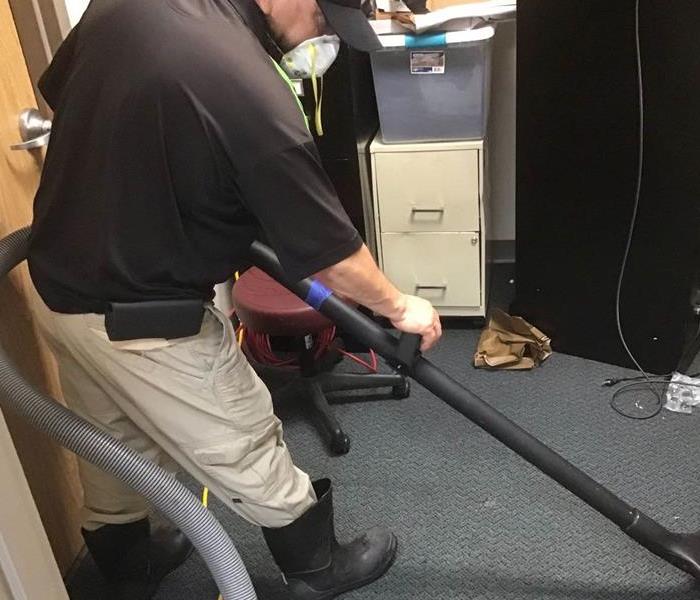 A SERVPRO technician working on water extraction.
A SERVPRO technician working on water extraction.
If you're reading this article, you've probably just discovered that your home's basement has flooded. The good news is that SERVPRO of Downtown Houston has been helping people with their water damage emergencies for years. We can help you salvage your belongings and clean up the mess.
Your basement has flooded, now what?
If your basement has flooded, it's important to assess the damage and make sure that you're safe. You may be able to salvage some of your belongings by removing them from the water, but if mold is growing on any furniture or other items, it's best to dispose of them immediately.
If possible, try to keep an eye on how much water is coming into your home and consider shutting off the water. If it looks like there will be little or no way for things to get back under control soon, call in professional help right away! SERVPRO of Downtown Houston is here to help moments like these. Before we arrive, there are a few things you can do.
Find the Source and Stop the Water Flow
If you can find the source of water, turn off the water at that point. For example, if your sump pump is not working correctly and there's a slow leak in your foundation or downspout, you'll want to turn off the power to it. If you have any questions about how to do this, call an electrician.
If turning off the water doesn't work, then call professionals who are trained in water damage restoration. SERVPRO of Downtown Houston will be able to pump out some of the water for you and get started on cleanup.
Shut off the Electricity and Avoid the Area
You’ve got to get out of the basement, and you need to do it quickly. You don’t want to be in the way if your basement floods again. Turn off the electricity to ensure the water doesn’t become electrified, which makes it much more dangerous.
Rushing water can knock loose electrical wires or rise up to the level of electrical outlets, which causes a very dangerous issue and can even start a fire.
Remove Damaged Materials
If you have any small items that are wet and moldy, it's a good idea to remove them from your home immediately. You don't want to risk spreading mold spores into your living space if you can avoid it. Even if the item is not visibly damaged by water, there may be mold growing inside that can't be seen from the outside. If you have hardwood floors in your basement (which are especially susceptible to damage from flooding), this is even more important because it might be difficult and expensive to repair the floor later on down the road if too much damage occurs while they're still wet and soft.
Call the Professionals at SERVPRO Downtown Houston to Clean up the mess for you
You don't have to deal with the mess and extensive cleanup process yourself. Call the professionals at SERVPRO Downtown Houston, and we'll make sure your home is restored to its pre-flood condition in no time. Our technicians are trained in the use of advanced water extraction equipment. It's this kind of experience that makes us the best choice for a flood cleanup in your area. We will treat your home with respect and get it back to its predamaged condition as fast as possible.
If you have experienced a basement flood and need help cleaning up, call the professionals at SERVPRO Downtown Houston. When they arrive they will assess your situation and provide you with an estimate on how much it will cost to complete the job.
Water Damage Restoration Process
1/20/2023 (Permalink)
Water damage is a common problem for homeowners. It not only causes significant structural damage to your home, but also leads to odors and mold growth if left untreated. Fortunately, it's possible to mitigate the worst effects of water damage by calling the professionals at SERVPRO of Downtown Houston, who will take care of the water damage restoration. This post will outline each step in this process so that you can better understand what SERVPRO does in the event of flooding or other water-related problems on your property.
Water damage is a common problem for homeowners.
Water damage can be caused by many things, such as burst pipes, flooding, natural disasters and more. Water damage can cause serious damage to your home and it’s important to fix water damaged issues before they become worse. When you first notice a problem, call us at SERVPRO of Downtown Houston and we will arrive as soon as possible and begin remediation.
The water damage restoration process
When you’re dealing with water damage, it’s important to understand that there is a variety of different ways that water can cause damage to your home or business. Water damage can happen from a burst pipe, flooding, or even a natural disaster such as a hurricane.
In addition to knowing the cause of your water damage, it is also important for you to know how long you have been dealing with this problem. If it has been less than 48 hours since the initial event occurred (such as an overflowing toilet or broken pipe), then there is still hope for your belongings. However if it has been more than 48 hours since the initial event happened and your personal belongings are damaged, SERVPRO of Downtown Houston can work to restore personal items. Even fragile family heirlooms like documents and photos can often be restored after water damage.
Inspection, Assessment and Documentation
Once SERVPRO of Downtown Houston arrives at the scene of the water damage, it's time to get down to business. The first thing we'll do is start an inspection. This will involve assessing the damage and documenting what we see, and of course keeping you updated on the situation.
If there is any standing water, we will begin extracting it, drying out your home or business, and begin restoration work immediately.
Drying and dehumidification
Drying and dehumidification are crucial steps in the water damage restoration process.
Drying is the most important step in any water damage restoration process, as it prevents mold growth and other serious hazards. To dry a wet area quickly, we use powerful dehumidifiers that extract excess moisture from your home’s air and prevent mold growth by lowering humidity levels to 40% or below.
Repairing structural damage
After conducting a thorough inspection and taking all necessary precautions to ensure the safety of the space, SERVPRO of Downtown Houston will repair any structural damage. This can include fixing leaks in pipes, doors and windows, walls or ceilings. Repairing these types of problems prior to starting any other cleaning process is essential because they can contribute to further damage if not fixed correctly. Additionally, repairing the structure before starting any mold remediation will ensure that the work is done correctly from the very beginning - this way you won't have to deal with any problems later on down the line!
Finishing repairs
Now that your home has been cleaned and dried, it's time to start finishing repairs. In cases of severe damage, we will even work to rebuild damaged parts of your home and get them back to normal again as soon as possible
We will ensure the job is done right and in a timely manner, for a reasonable price. At SERVPRO of Downtown Houston we have a reputation for professionalism and speed, so you can trust us to get your home back in order.
Water damage is a serious threat to your home and belongings. It's important that you act quickly to mitigate the damage. When you are faced with water damage, call the professionals at SERVPRO of Downtown Houston and we will get your home back in working condition in no time!

 24/7 Emergency Service
24/7 Emergency Service



